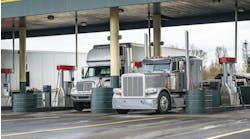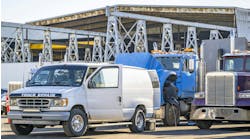Today’s trucking technology minimizes guesswork in accident investigations
Every person over the age of 40 is acutely aware of how far technology has come in the last 20 years. Moving from landline telephones and home computer internet access to 5G wireless technology that converted flip phones to smartphones gave us access to the entire world. The same technological advances have been at work in the trucking and automotive industry, changing the face of accident investigations.
The purpose of any accident investigation is to determine how and why the accident occurred and whether, or to what extent, the involved drivers’ own mistakes caused or contributed to the cause of the accident. Historically, investigations were limited to taking photos of the scene and vehicles, as well as locating and interviewing the involved parties and witnesses. From an accident reconstruction standpoint, the idea was — and remains — to:
- Determine the area of impact in the roadway
- Determine the angles of impact between the involved vehicles
- Determine the vehicle speeds prior to and at impact
- Calculate or evaluate driver reactions to whatever stimulus affected them leading up to the collision
Electronic computer modules
Technological advancement — both on vehicles and in society as a whole — has dramatically enhanced the ability to accurately investigate and reconstruct accidents. The past two decades have seen the development of Electronic Computer Modules (ECMs) on commercial trucks that typically save last stop data and record the last two hard stops made by the truck.
The data from these ECMs record the truck’s speed, percentage of throttle and braking input for 90 seconds prior to either the last stop or a hard brake (defined as a decrease of speed of at least 7 mph per second). Meanwhile, airbag modules on passenger cars normally record data for the last five to eight seconds before airbag deployment. This data includes the speed of the vehicle over those last five seconds, whether the driver braked in the last eight seconds and whether, and to what extent, the driver veered left or right (or did not steer at all prior to impact).
Additionally, passenger car airbag modules now have the capability of recording the crash pulse over a period of 300 milliseconds, revealing the Delta-V (change in speed) the passenger car experienced as it collided with another vehicle or object.
Safety sensors
Onboard databases have become the gold standard for determining vehicle speeds and are far more accurate than the traditional method of measuring braking distances. Other technological advances are geared more toward safety than accident reconstruction but can be incredibly revealing when attempting to reconstruct an accident.
These advances include forward-looking radars that automatically slow trucks when traffic ahead slows or stops unexpectedly (meaning it helps prevent or discourage trucks tailgating other vehicles), truck and trailer sway sensors, lane departure warning systems and tire pressure sensors. All of these sensors can trigger critical event recordings that immediately transmit to and alert the driver’s dispatcher to a potential problem on the road. If an accident does occur, this data is recorded and available for use in attempting to determine how or why it happened.
Dashcams and video surveillance
Ultimately, the greatest technological advancements involve the use of video. Although some in the industry are reluctant to have onboard dash cams mounted on trucks, the reality is dash cams are essential to accident reconstruction, especially where the impact occurs in the camera view.
Typical accident reconstructions will cost between $10,000 and $15,000, yet routinely the entire story of an accident can be told by the dashcam video. This is certainly the case in lane-change situations where there is a debate over which driver changed into whose lane. In these instances, the video either confirms the truck driver was entirely at fault or not at all at fault. Either way, this level of clarity makes resolving claims more efficient and less costly.
Just as importantly, with the proliferation of security cameras mounted on homes, business offices and warehouses, along with monitors posted at intersections and highways, a vital part of any accident investigation now includes canvassing the area surrounding the accident site to identify and obtain any security surveillance video that may have captured the incident.
Every experienced trial lawyer, investigator and accident reconstructionist knows that witness recollections are among the most unreliable forms of evidence. Video is much more reliable, and has been the biggest game-changer in accident reconstruction and investigation over the past five years.
This trend should continue, becoming even more reliable as cameras are now being mounted at the rear and sides of trucks and passenger vehicles. While the idea of these cameras will be to promote safety and assist drivers in seeing their blind spots, they will almost certainly enhance the ability to determine exactly how and why accidents happen, regardless of where the impact occurs on the involved vehicles.




